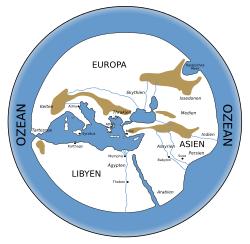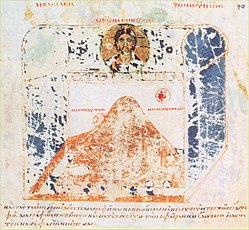Partial Lunar Eclipse 2019-07-16
By combining these three images, one get's a good impression of the southern edge of the Earth's umbra, trough which the moon passed during that eclipse.
Around 330 BCE, greek philosopher Aristotle suggested that the Earth must be a sphere, based on the shape of the Earth's shadow he observed during lunar eclipses.
The three seperate shots are 1/60 second exposures, taken with a Canon EOS 550D at ISO 200, using a 90/1000mm refractor telescope.Relevante Bilder
Relevante Artikel
Flache ErdeDie Vorstellung einer flachen Erde oder einer Erdscheibe findet sich als religiöse Vorstellung in vielen frühen Kulturen. Die Erdoberfläche wird hierbei als flach und oft in Gestalt einer (runden) Scheibe gedacht. Mit der Verbreitung astronomischer Naturwissenschaften seit der Antike kam das Modell der Erdkugel auf. Der Globus als Erdmodell blieb seitdem die vorherrschende Lehrmeinung im europäischen Mittelalter und in der Neuzeit. .. weiterlesen
ErdschattenAls Erdschatten wird in der Astronomie und Raumfahrt der Schattenkegel bezeichnet, den die Erde in den Weltraum hinaus wirft. .. weiterlesen











